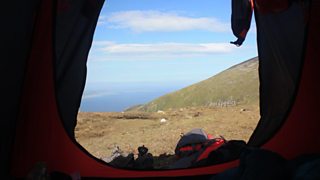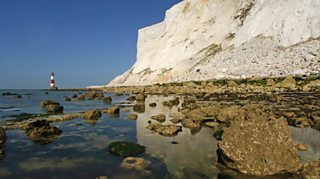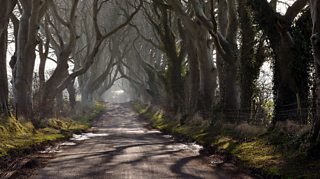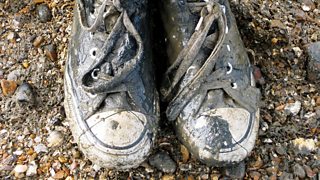Five adventures to get you into the wild this summer
A regular dose of the great outdoors is thought to be good for both our bodies and minds. But with technology dominating so much of our day-to-day lives, it’s easy to lose sight of the benefits of spending time outside, away from our screens and surrounded by nature. Inspired by our Go Wild collection of nature documentaries, here are five fun ways to explore the natural world this summer – from 15-minute mini-adventures to overnight excursions.
-
![]()
Explore Go Wild now on 大象传媒 Sounds
Nature documentaries to inspire your next outdoors adventure introduced by Harriet Noble.
1. Stargazing: take a close look at the night sky
Stargazing at night is one of the simplest and oldest ways to connect with nature – and the best part is, it’s available to everyone. All you need is a clear night and 15 minutes free to step outside and study the sky. You’ll see many more stars – and maybe even the Milky Way – out in the countryside away from urban light pollution, but city dwellers should still be able to spot some exciting sights, especially on moonless nights.

For the best stargazing experience, the Natural History Museum recommends keeping away from artificial light such as street lamps or your phone screen, and giving your eyes 10-15 minutes to adjust to the dark.
There are 88 named constellations, and which ones you’re able to see will vary depending on where you are and the time of year. Websites and stargazing apps can help you put names to what you’re seeing, and if you’re keen to spot a shooting star you can have a look online to see when the next meteor shower is due.
Hear how scientist Maggie Aderin-Pocock enhanced her city stargazing experience as a child by building her own telescope, in this episode of The Life Scientific.
2. Walking: get to know your local landscape
From the Cairngorms to the South Downs, the UK offers some truly spectacular landscapes for walkers. But if you only have an hour or two to spare then exploring roads, tracks and pathways closer to home can offer unexpected adventures too.
For most of us, there are hidden historic paths, thriving wildlife and peaceful places not far from where we live – all it takes is a bit of effort to find them. Britain is criss-crossed by an estimated 140,000 miles of public rights of way, with many footpaths traversing private land or taking hidden routes away from the noise and bustle of main roads. So find a local map with footpaths marked and try following its snaking lines to see where they take you.
If you walk the same route regularly, you’ll be able to observe incremental changes as the landscape transforms slowly through each season. And you’ll learn to spot signs of local wildlife, from birds’ nests to badger runs.
3. Camping: spend the night under canvas
There are few better outdoor experiences than waking up to the sound of birds and the smell of morning dew on the grass, or eating breakfast outside after a night in a tent. Whether you prefer an ordered campsite with all mod cons to hand, or wild camping in a secret spot, there are hundreds of incredible places to pitch a tent around the UK.

If you’ve never camped before and aren’t sure you’ll enjoy it, borrow a tent from a friend and try a practice run in your own garden so you still have creature comforts close at hand if you decide you can’t cope. Or simply go glamping instead – where you’ll get a top class tent, a decent bed and luxury toilets all set up for you. Easy.
Get tips for campsite cuisine from seasoned campers and barbeque experts in this episode on outdoor cooking from The Food Programme.
4. Rock pooling: take a close look at tidal wildlife
In the UK you’re never more than 80 miles from the coast, and our shorelines are home to some fascinating creatures if you know what to look out for. Even small rock pools can contain a rich array of wildlife, including crabs, anemones, shrimps, sea squirts and breadcrumb sponges.

Rock pools’ tidal environment makes them an extreme place to live: variable water conditions, rough seas and predators like seagulls and oystercatchers mean that many creatures have evolved some fascinating features just to survive. For example, sea sponges are so hardy you could break them into tiny pieces and they would reassemble themselves again afterwards - not that we recommend doing that!
If you do give rock pooling a go, check tide times and local advice so you don’t get caught out, wear sunscreen and watch out for slippery rocks.
Hear from naturalist Phil Gates as he introduces Brett Westwood to the wildlife of Northumberland’s rocky shoreline in A Guide To Coastal Wildlife.
5. Kayaking: explore the UK鈥檚 waterways
Travelling by kayak or canoe can be an amazing way to see a different side of the countryside. Gliding through the water, you’ll get close to wildlife like ducks, moorhens and herons – if you’re lucky, you might even spot an otter.
Basic paddling skills are easy to pick up, and there are canals, rivers, lakes and estuaries across the UK where you can hire a kayak or join a guided trip for a few hours or even the whole day – from the wooded creeks and hidden beaches of Cornwall’s Fal Estuary to the Lake District’s mountain-fringed waterways.
So get out and explore, you won’t regret it!
Follow Roger Deakin as he canoes down the peaceful Waveney River, from its source in Suffolk to Geldeston Lock in Norfolk in Cigarette on the Waveney.
Continue your adventure
-
![]()
Go Wild
Nature documentaries to inspire your next outdoors adventure introduced by Harriet Noble.
-
![]()
Forest 404: Why we should listen to trees
Researcher Alex Smalley gives his top tips on how to make the most of the stress-busting benefits of nature.
-
![]()
Five wild programmes to inspire your next outdoor adventure
Escape your busy routine with this wonderful selection of nature programmes.
-
![]()
11 clear reasons to love mud
Here are 11 reasons to love soft, sticky soil. It鈥檚 as clear as mud.





